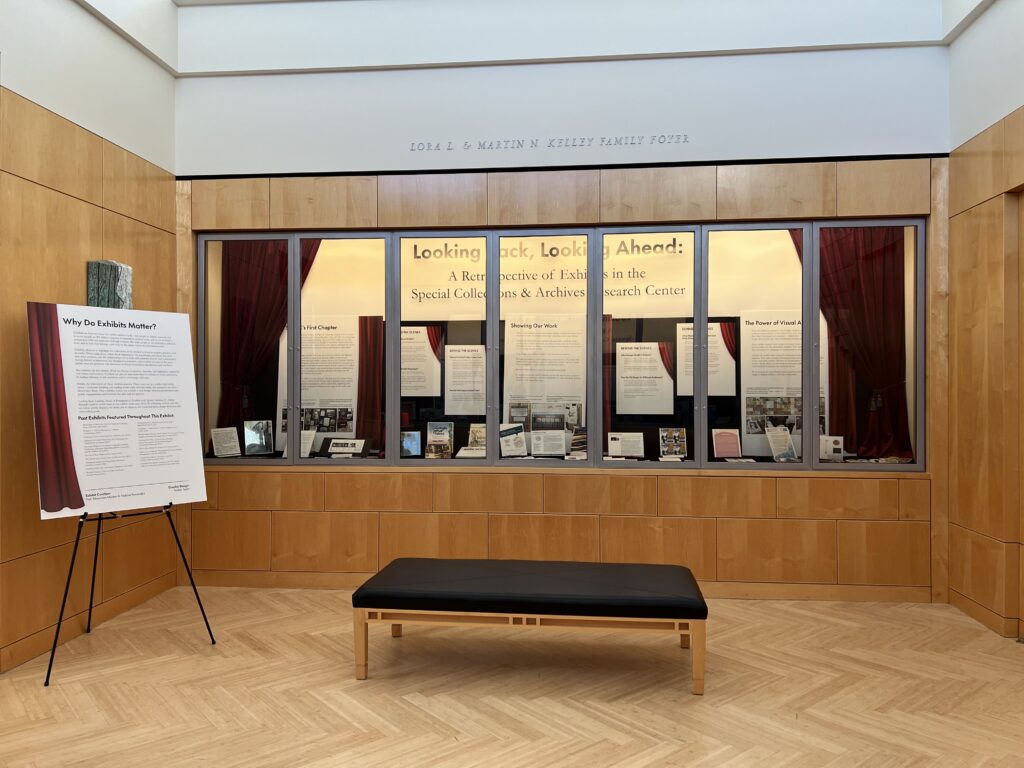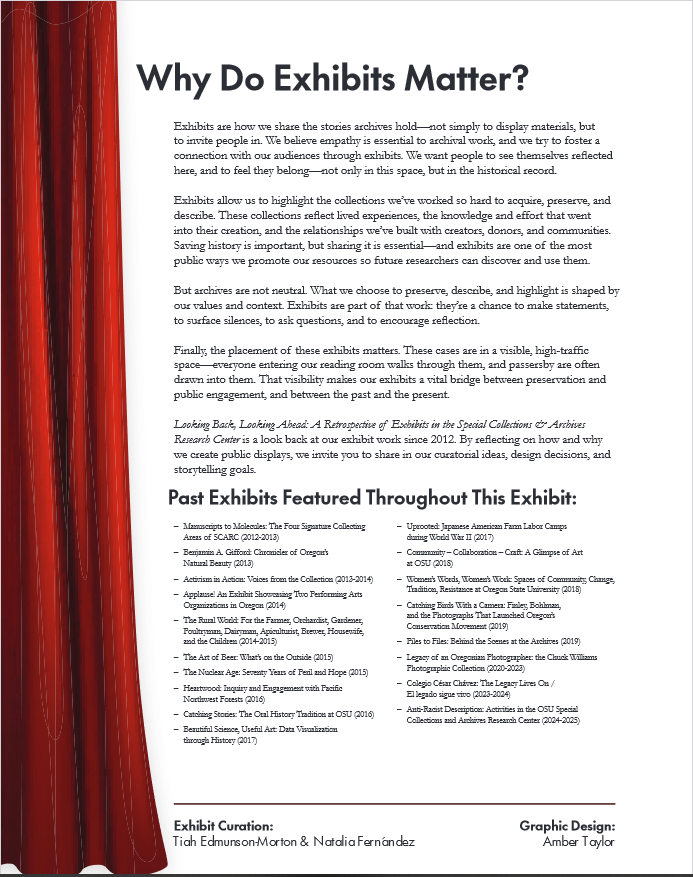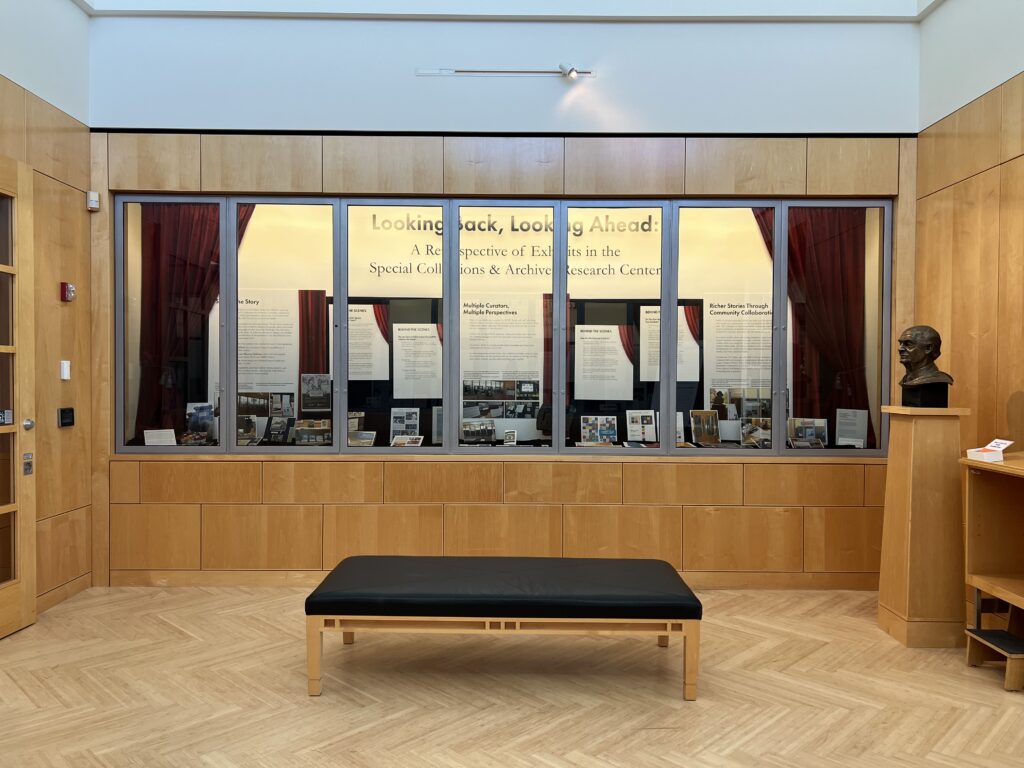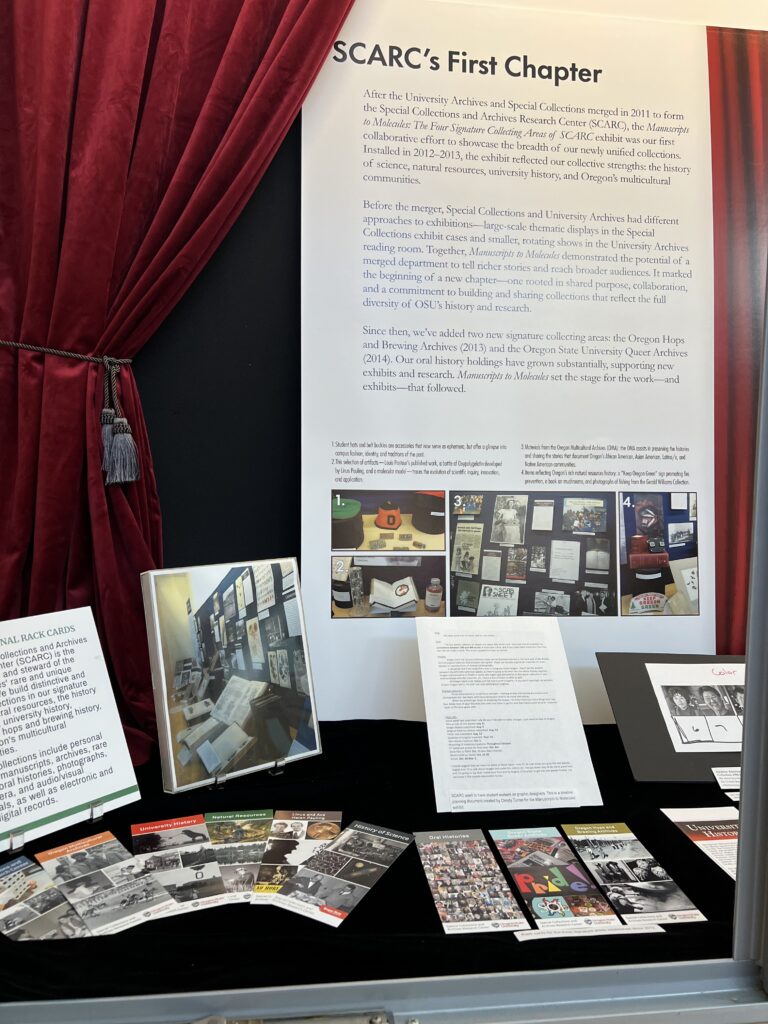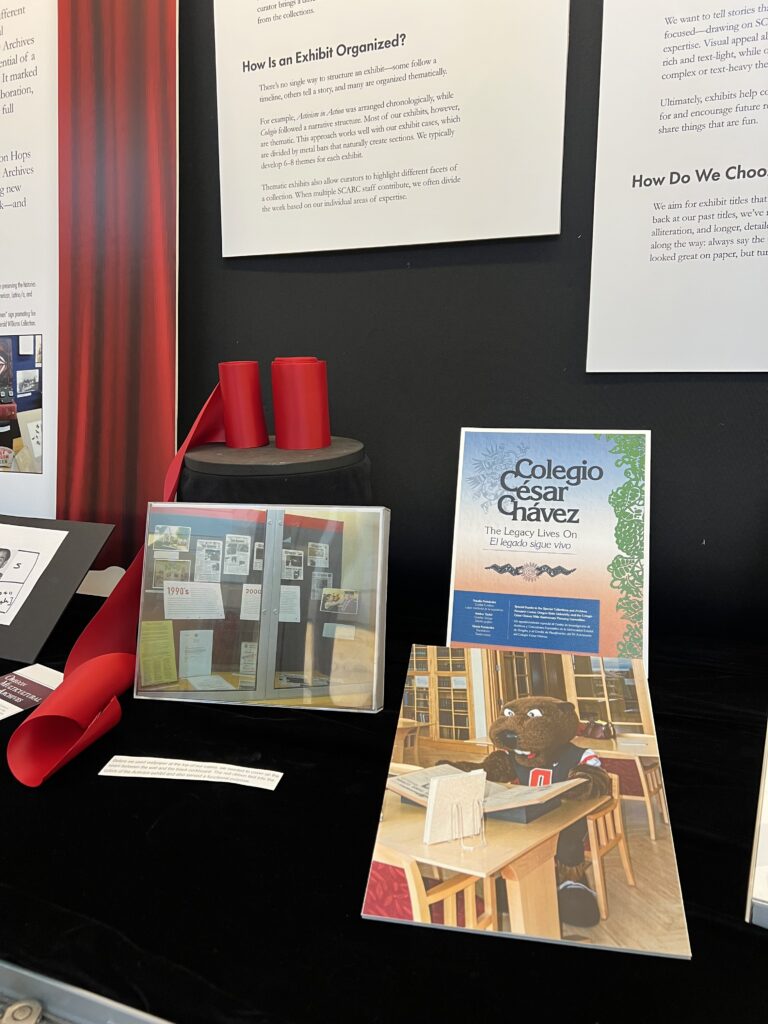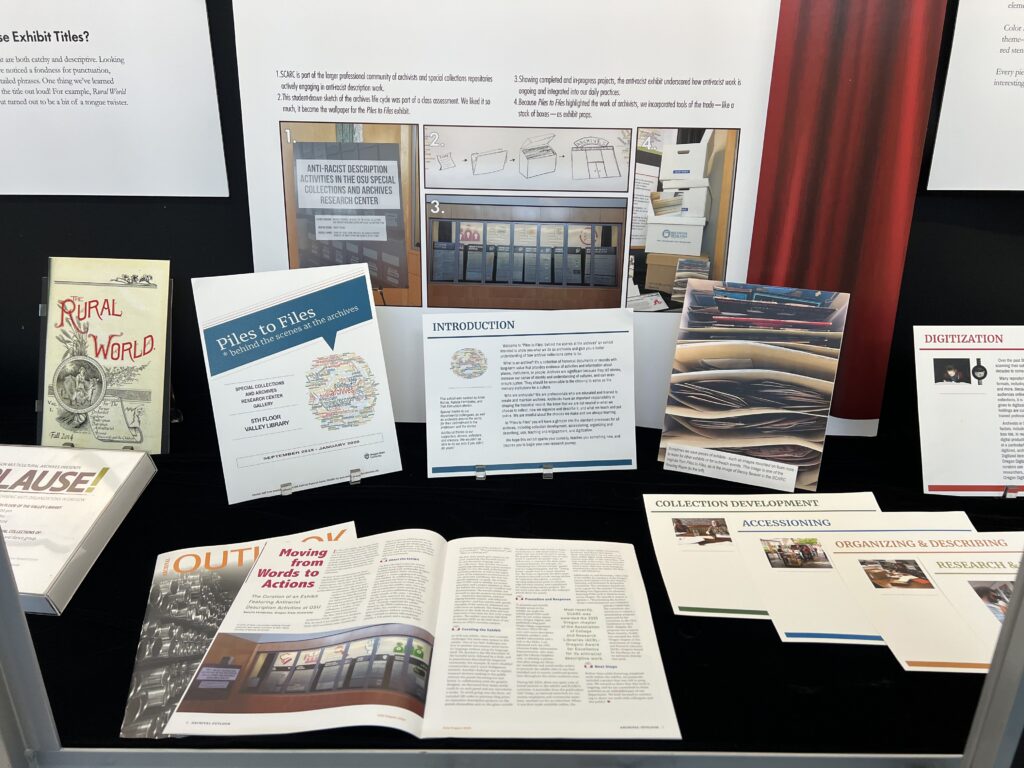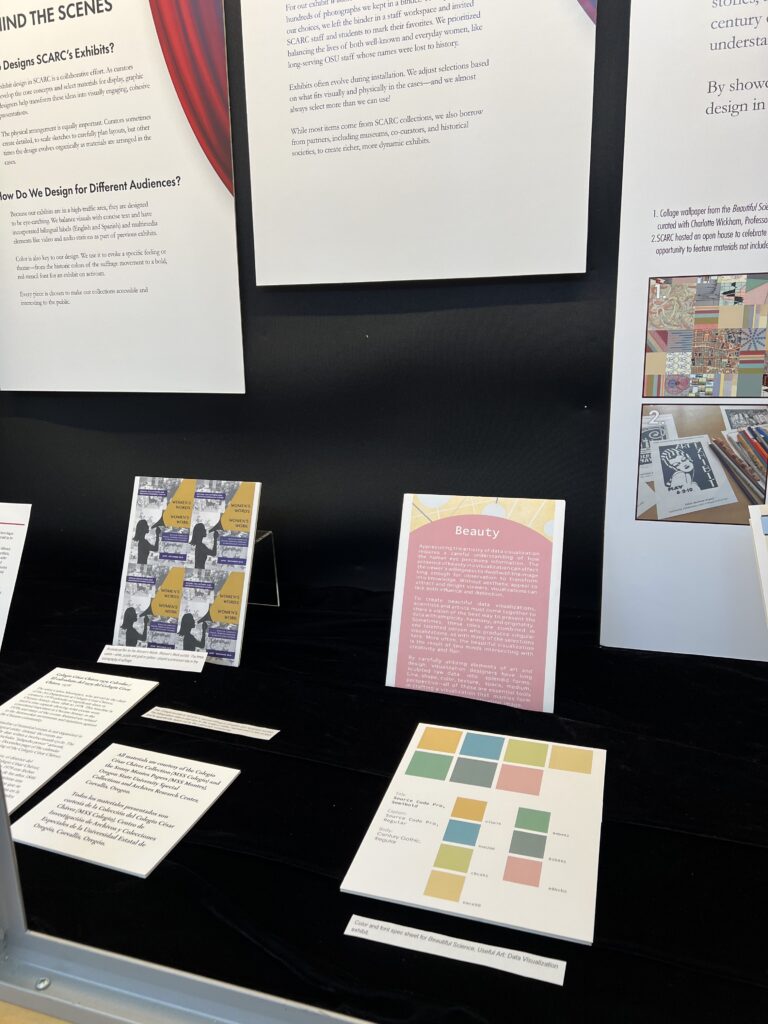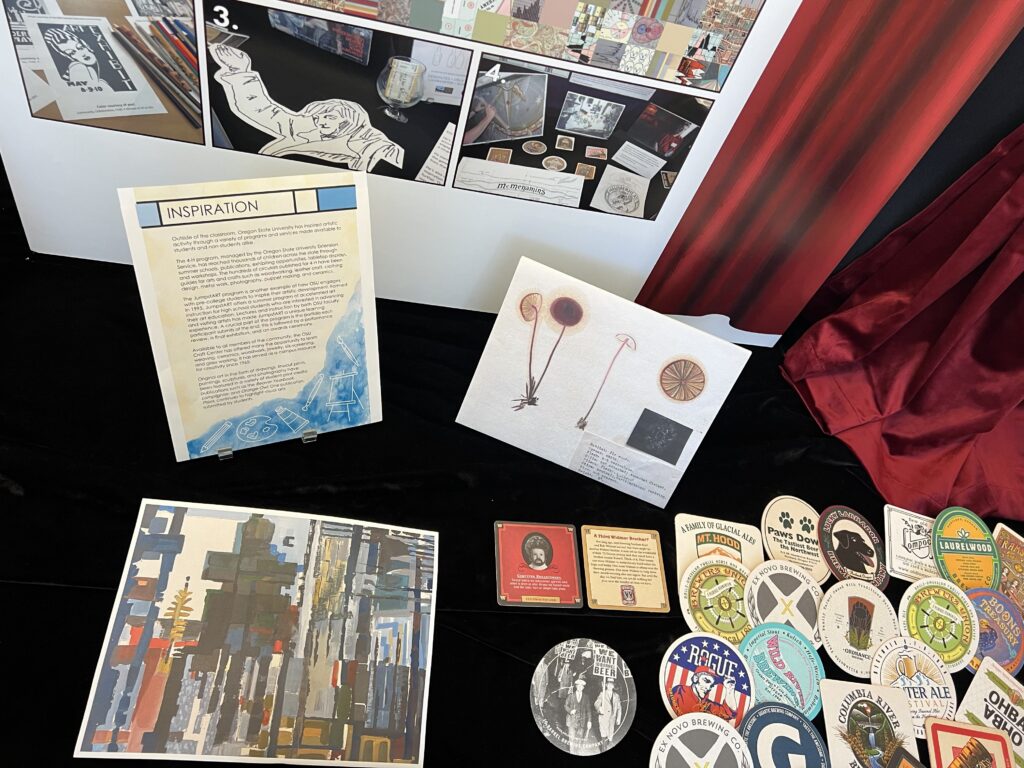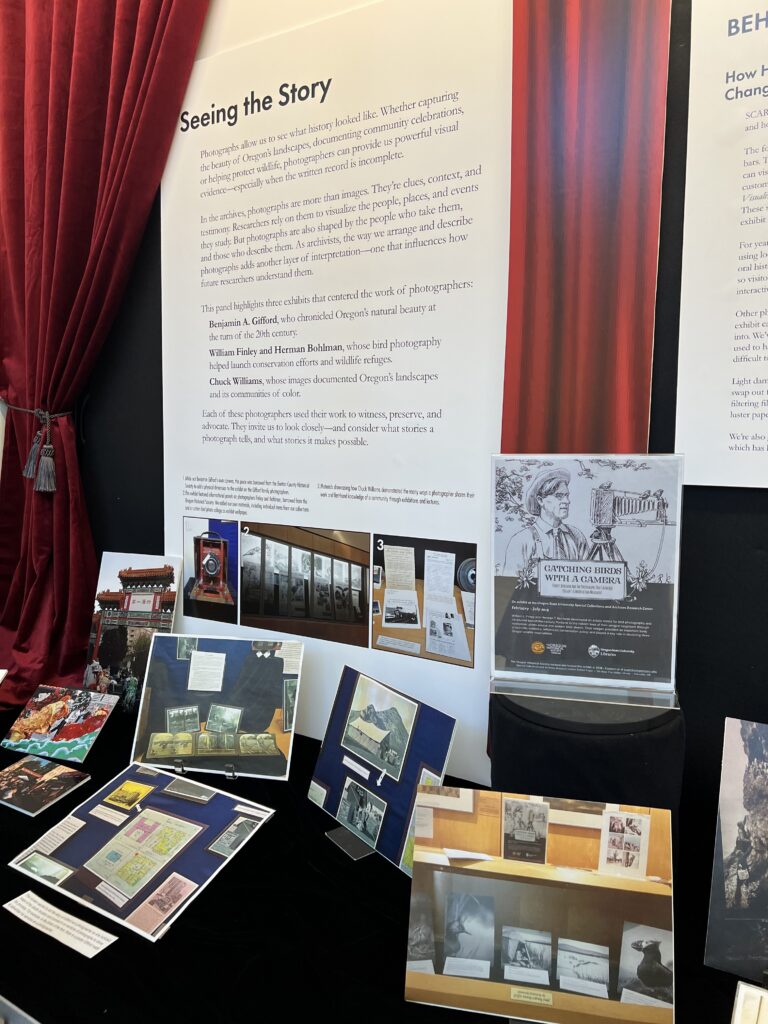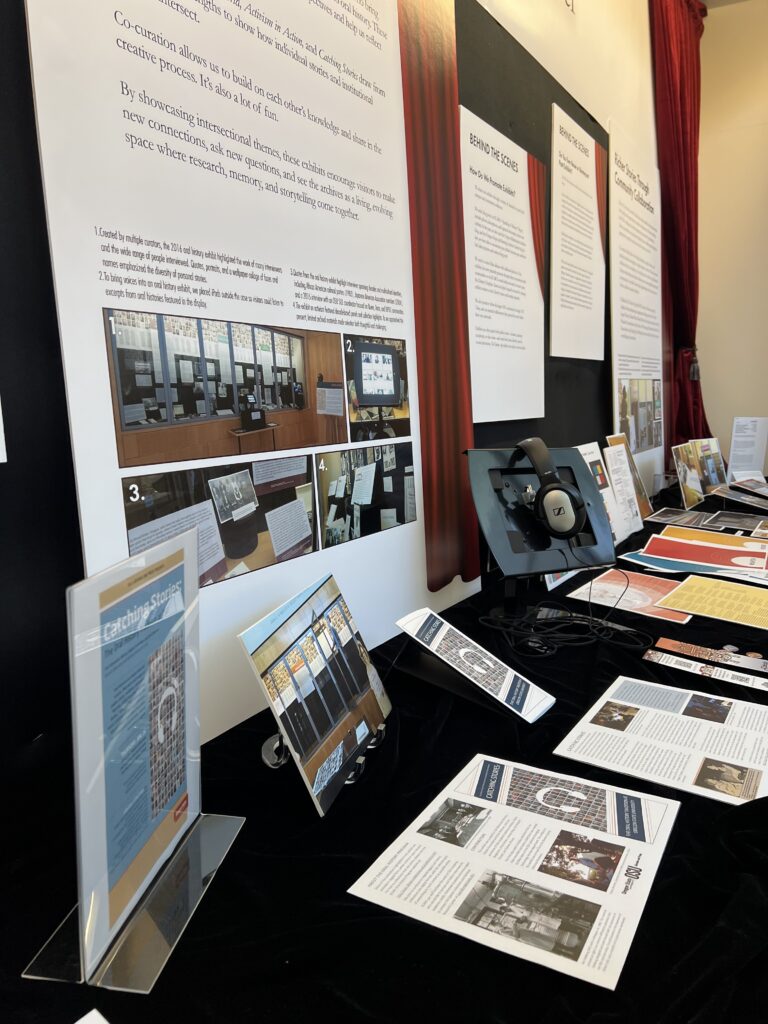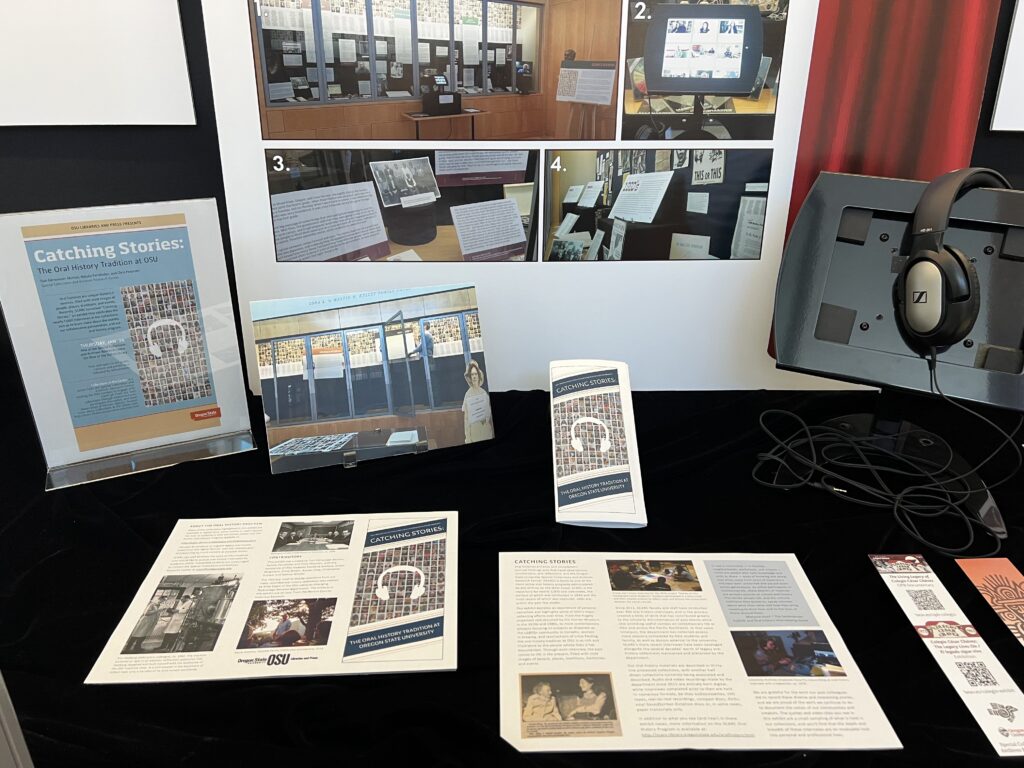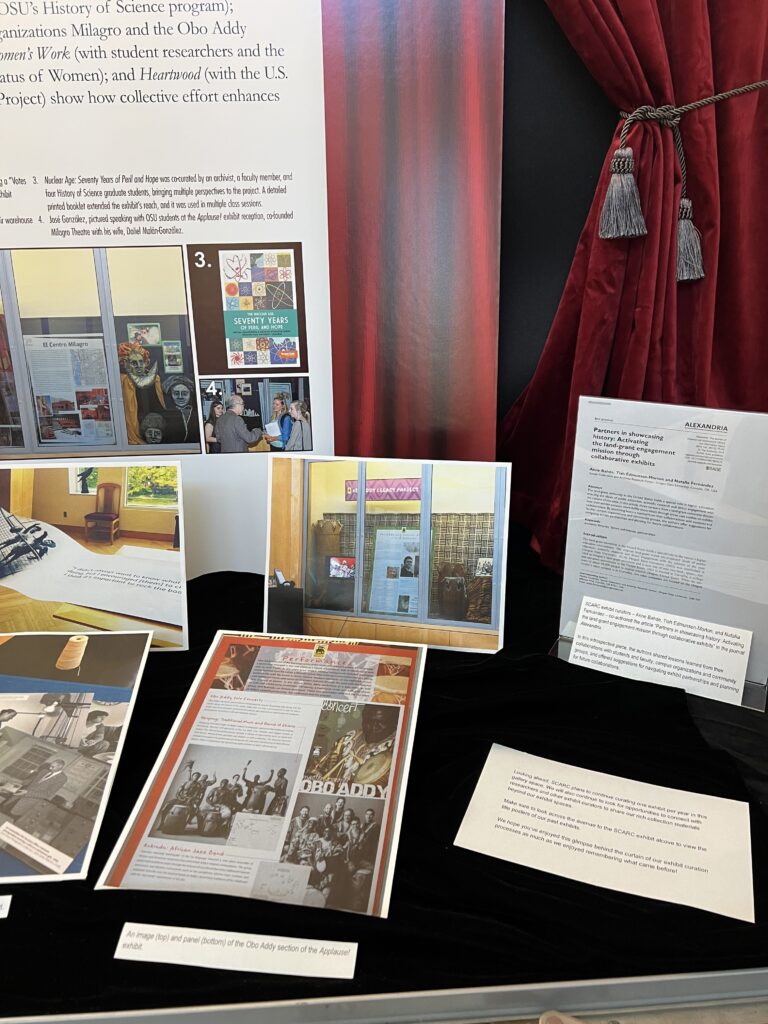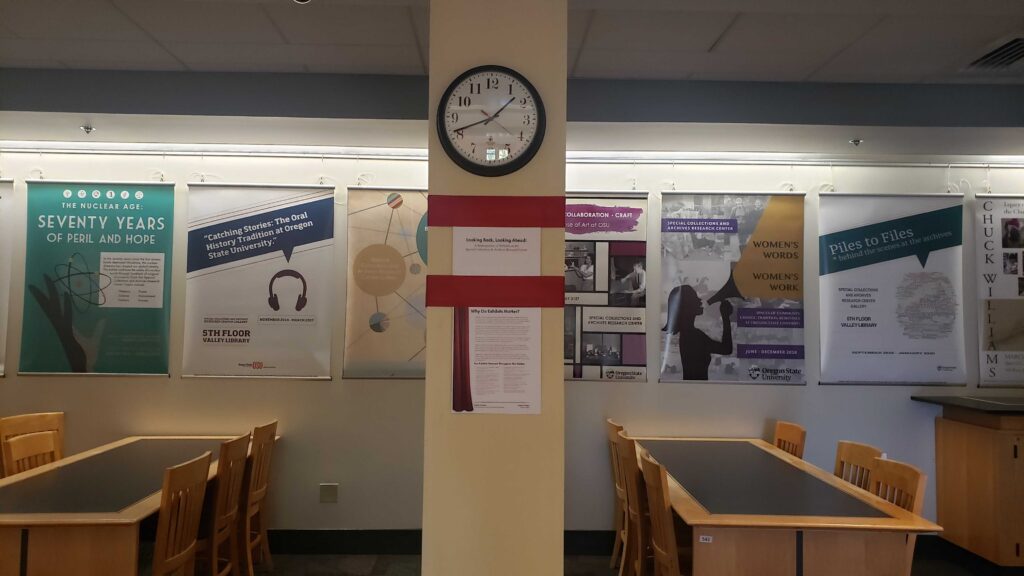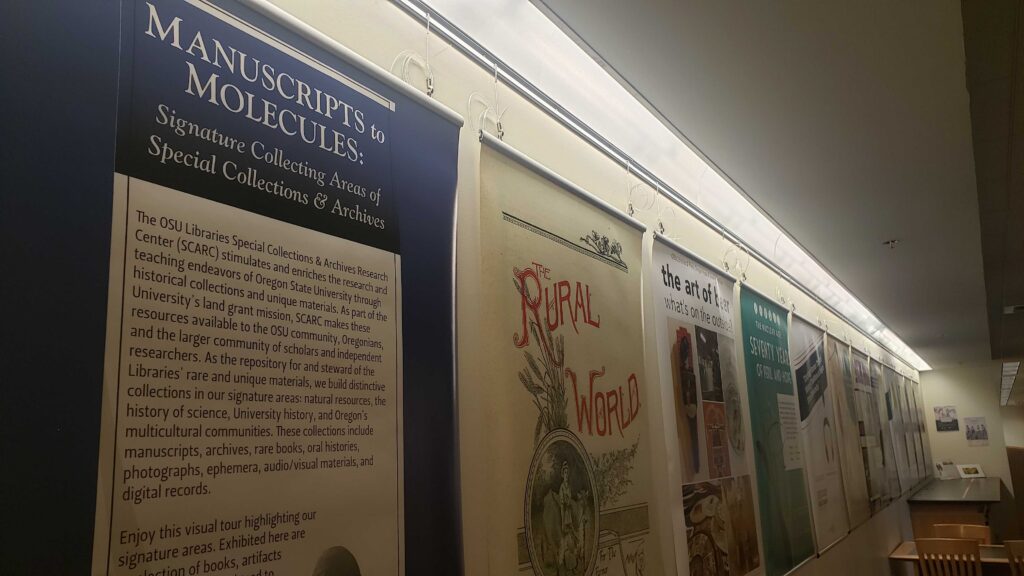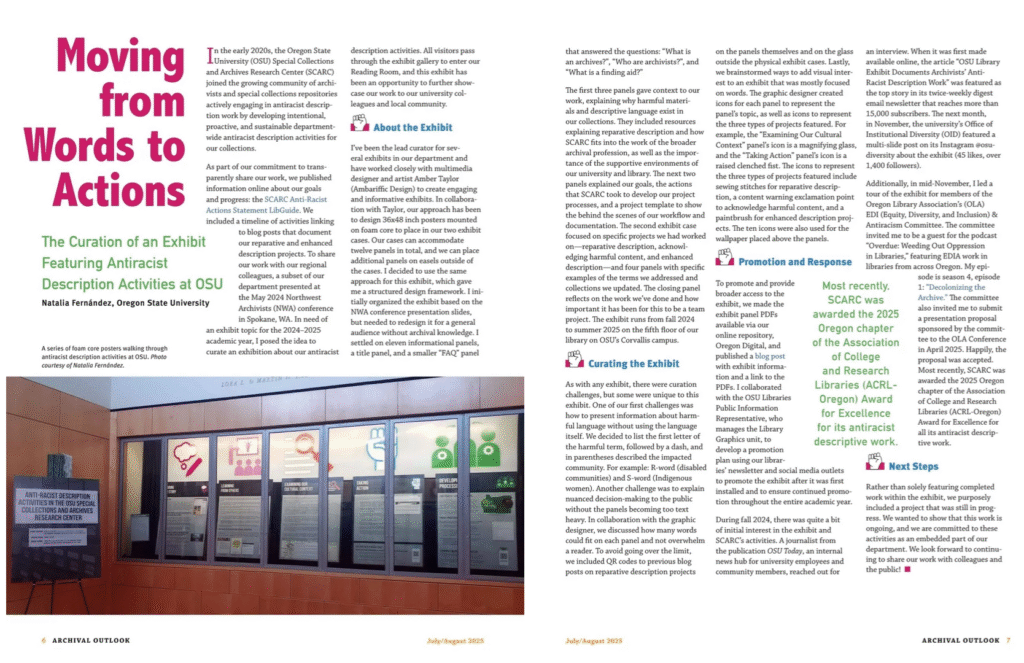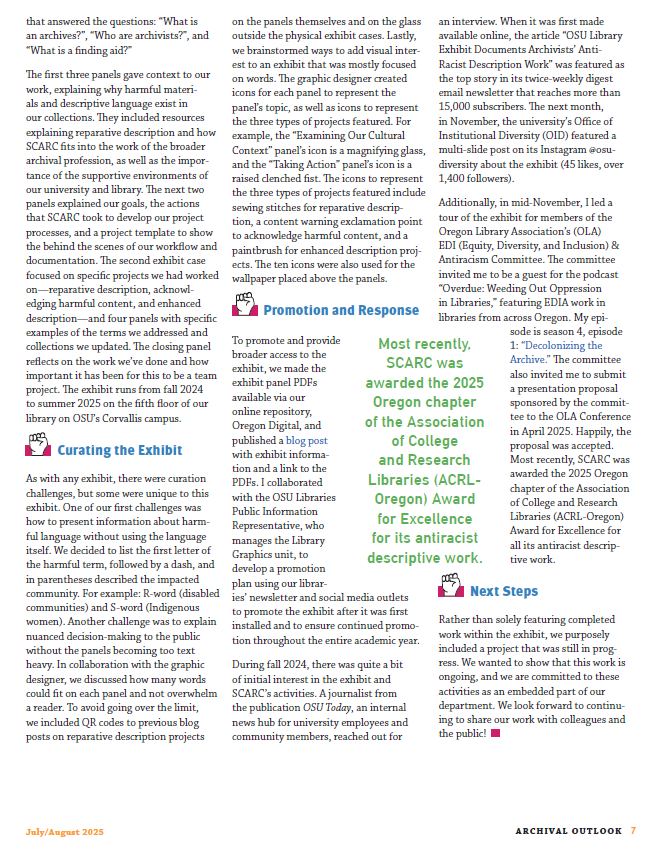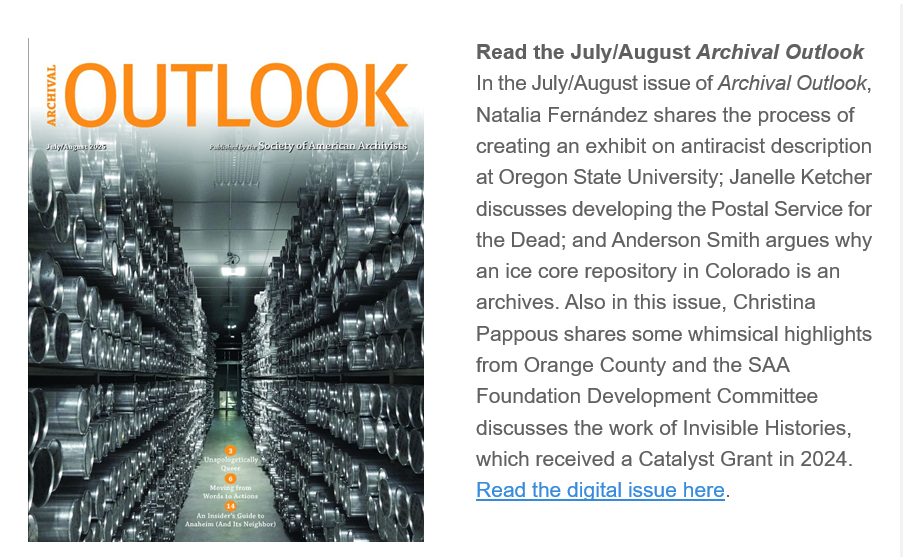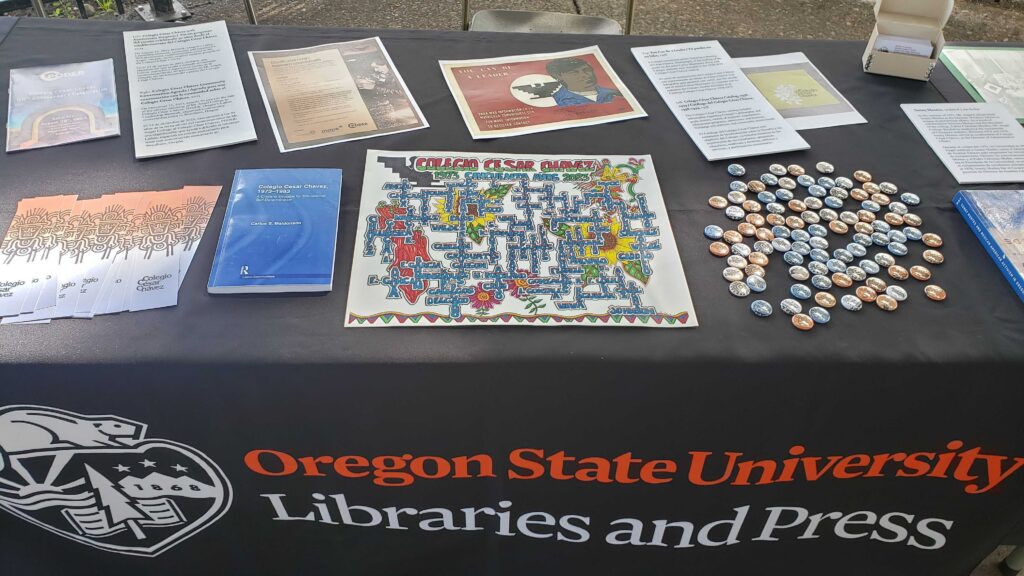
The Oregon Multicultural Archives participated in 4 events this month to celebrate 2025 Latino/a/x/é Heritage Month!
To kick off the month, we were invited to feature the Colegio César Chávez exhibit as part of two Latinx community celebration events, the Festival Latino in Albany and the PODER Hispanic Heritage Month Summit, Salem.
On October 8th, we were invited to introduce the OPB film The Living Legacy of the Colegio César Chávez at Portland State University for a film screening and panel discussion. To close out the month, on October 12th we were invited to host a table at the 2nd annual OSU Latina Luncheon.
Festival Latino, Albany, OR on September 14th at Monteith Riverpark
The event included musical acts, art and history exhibits (including Colegio!), activities for children, and plenty of food vendors. It was hosted by the Linn-Benton Hispanic Advisory Committee.
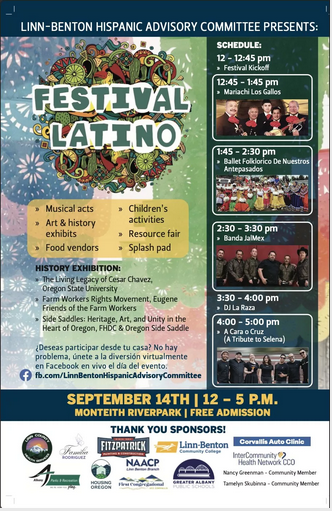
Event Photos of the Exhibit and Information Table
About 150 people viewed the exhibit and about 75 event attendees stopped by the information table to ask questions and learn more during the 5 hour event!
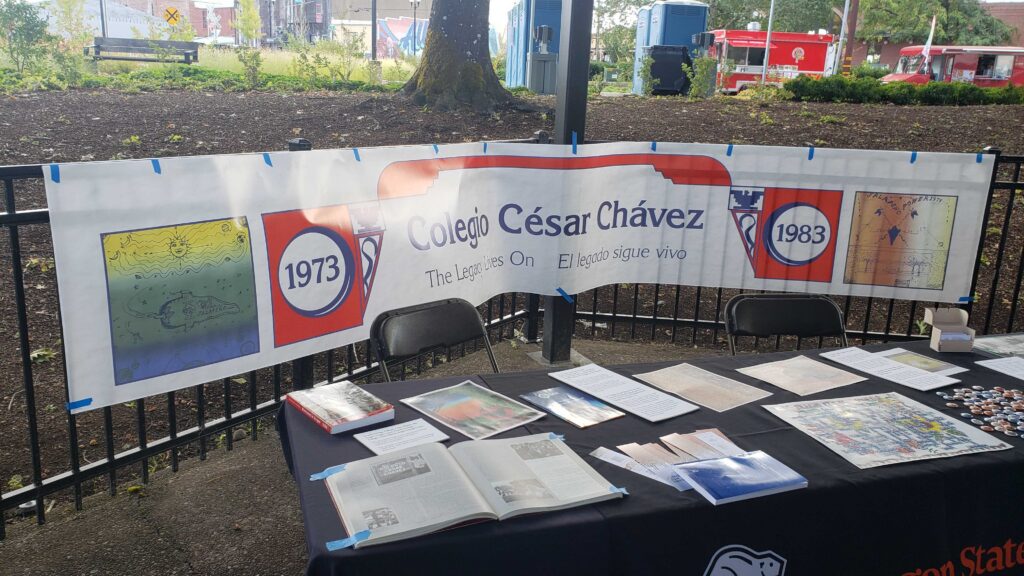

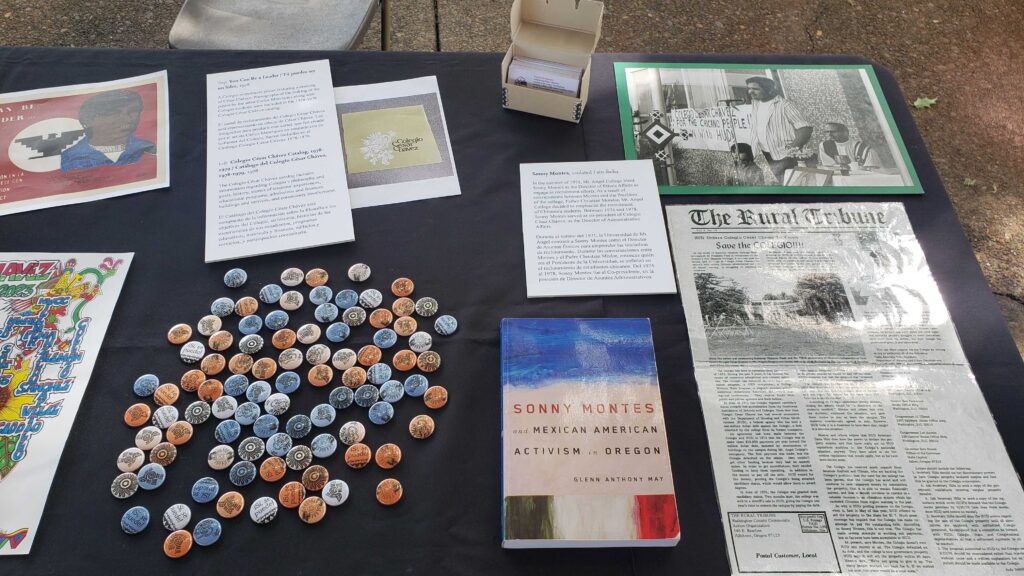

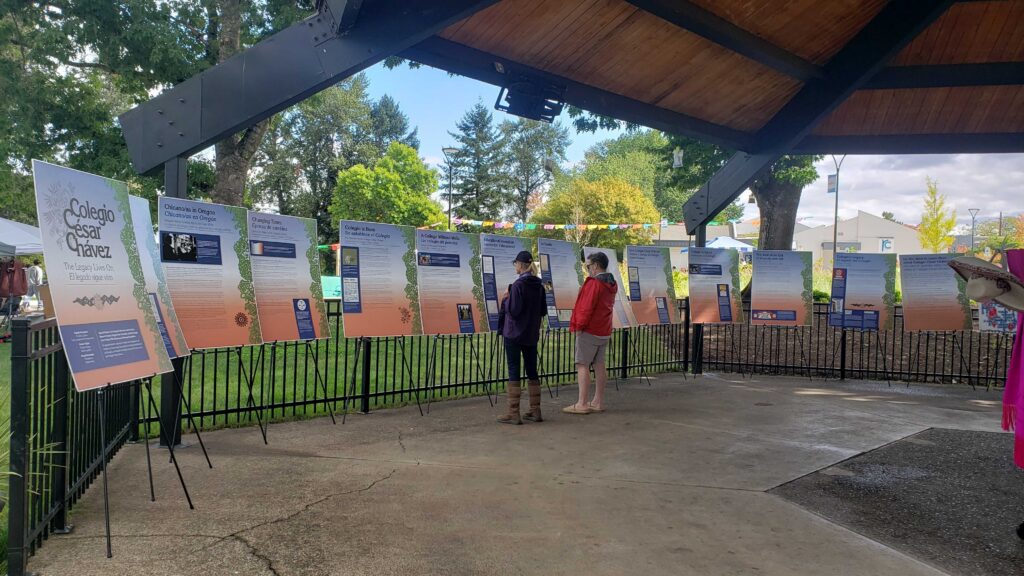
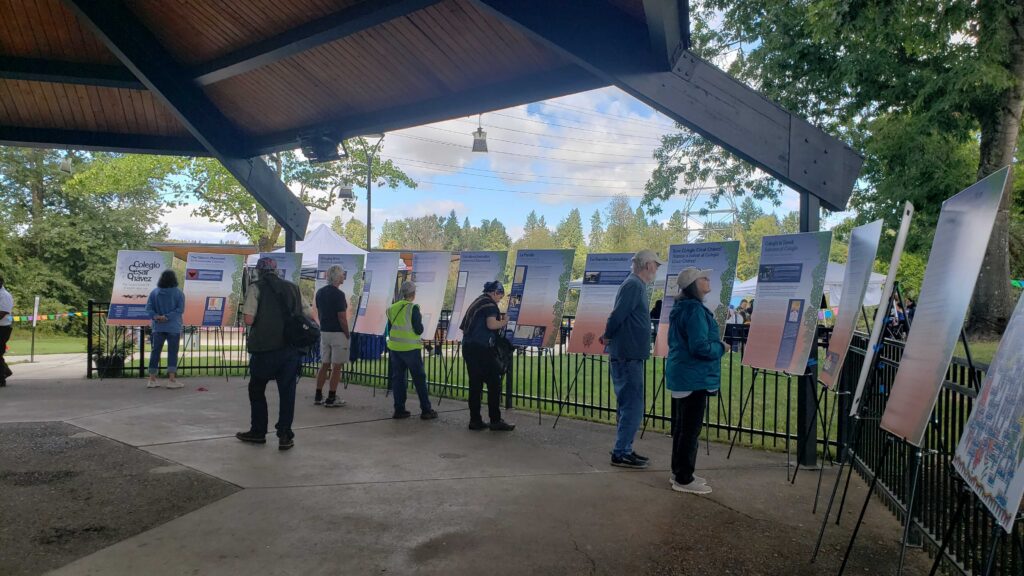
~~~~~~~~~~~~~~~~~~~~~~~~~~~~~
PODER Hispanic Heritage Month Summit, Salem, OR on September 15th
PODER, Oregon’s Latino Leadership Network is a nonprofit organization made up of over 3,200 Latino leaders, organizations, businesses, public employees, community members, and allies across Oregon. Oregon’s premier Hispanic Heritage Month Breakfast & Summit brought together hundreds of leaders, executives, and changemakers to celebrate and lead.
This is the 3rd year the Summit has featured the exhibit! About 50 event attendees viewed the exhibit during the pre-breakfast 1-hour resource fair.
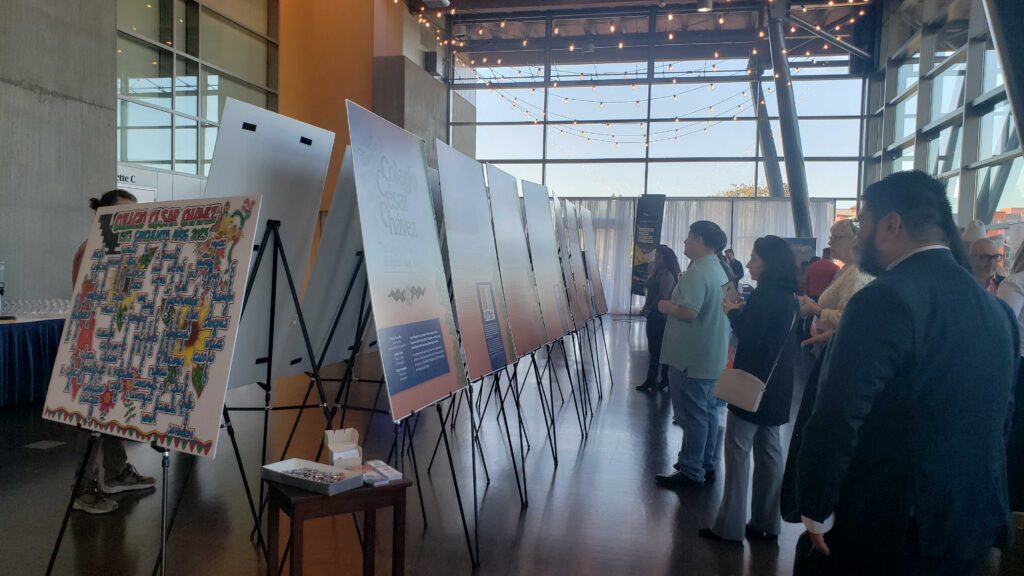
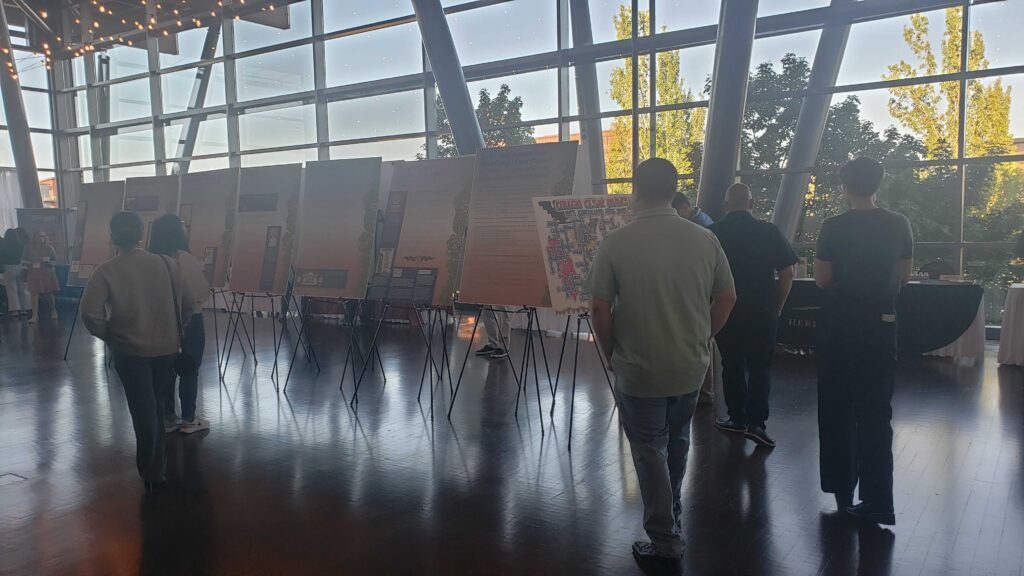
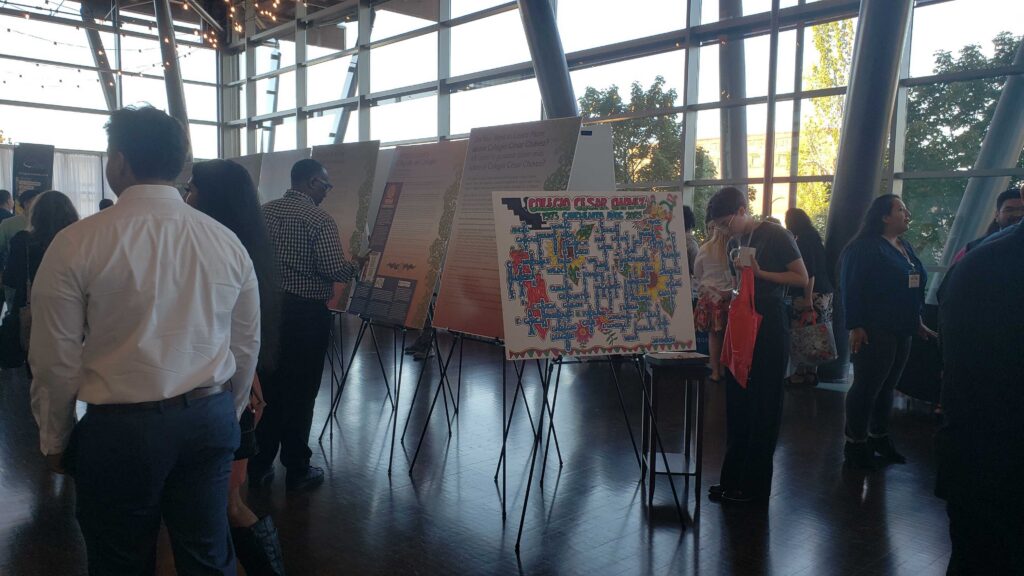
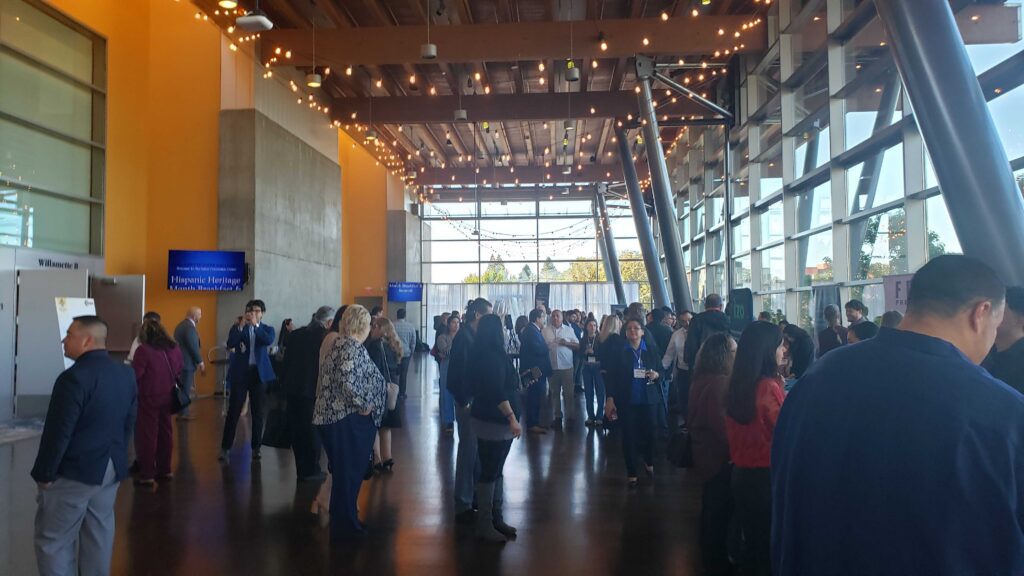
~~~~~~~~~~~~~~~~~~~~~~~~~~~~~
Film Screening and Panel Discussion of the OPB film The Living Legacy of the Colegio César Chávez at Portland State University, Lincoln Hall, on October 8th
The event featured a panel of speakers which included Alicia Avila, a multilingual journalist and documentary producer based in Portland, Oregon, who produced the film; Sonny Montes and José Romero, the co-founders of the Colegio César Chávez; and Anthony Veliz, the founder of PODER: Oregon’s Latino Leadership Network. There were about 25 attendees.
While the event was not recorded, it was similar to the January 2025 film screening and panel discussion that took place at the Oregon Historical Society; this event was recorded: “The Living Legacy of Colegio César Chávez” Documentary Screening and Panel Discussion
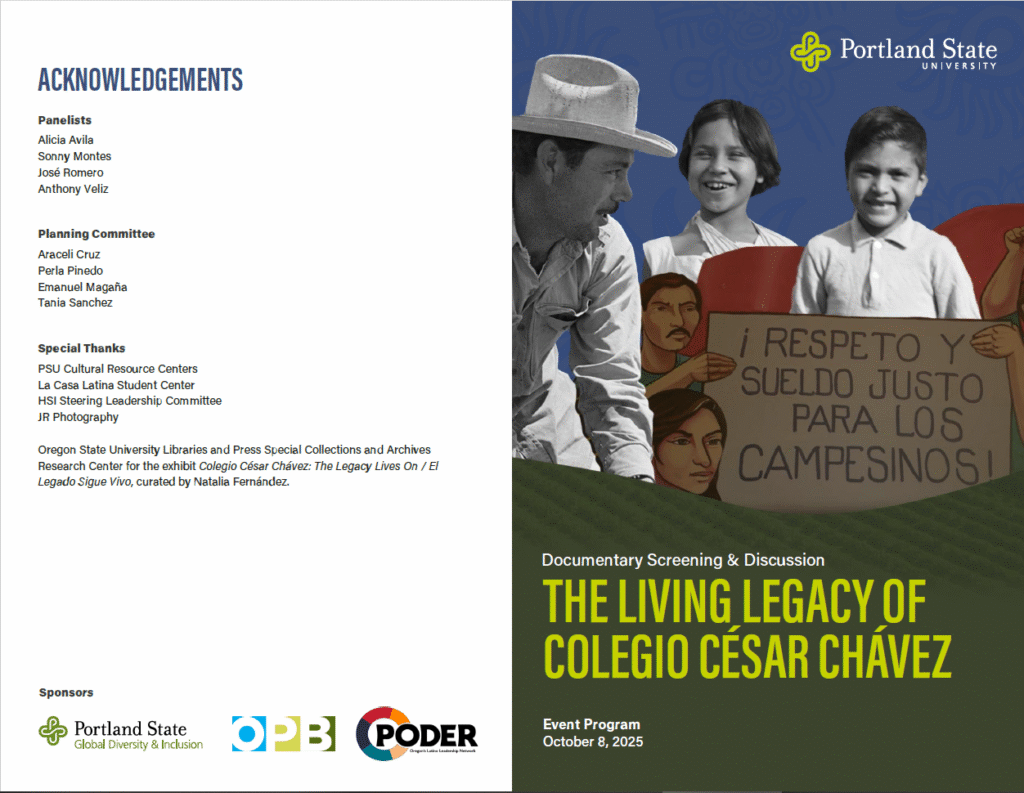
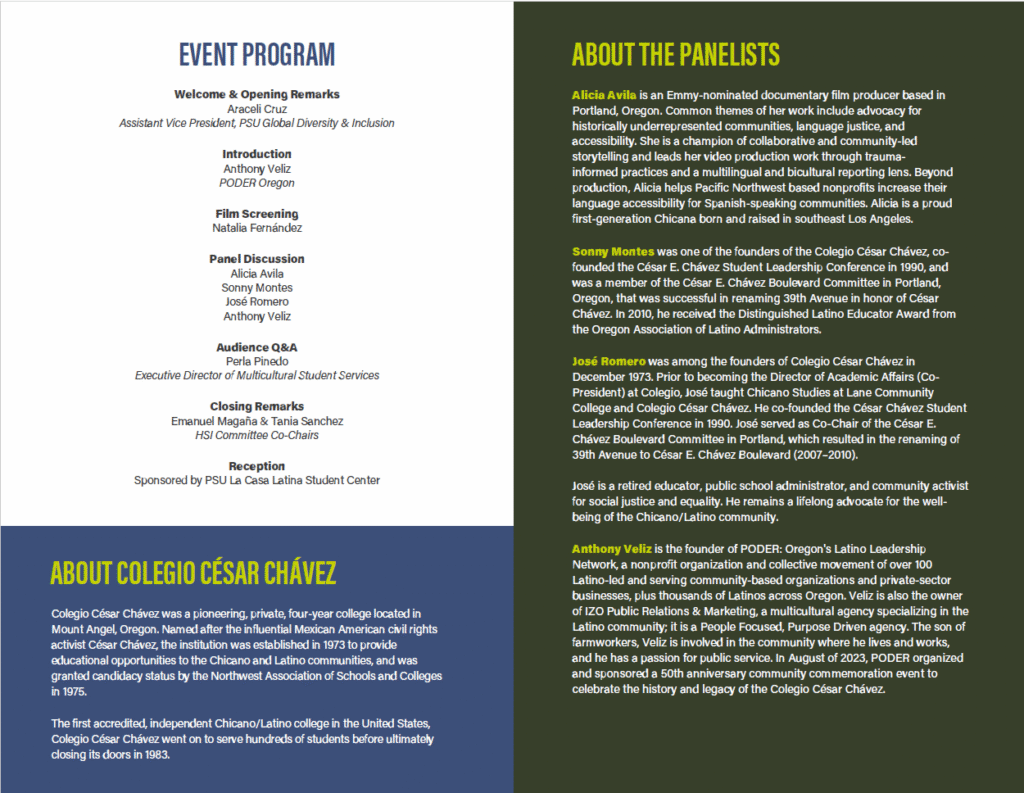
This event was organized and hosted by PSU’s Global Diversity and Inclusion office which “offers robust diversity programming that serves and empowers student populations whose success, retention, and academic success are most challenged by historical factors and contemporary inequity” (GDI website). PSU was designated as an “emerging Hispanic-Serving Institution” (HSI), a distinction provided to institutions in which Hispanic students make up between 15 and 24 percent of full-time undergraduates and was awarded the 2024 Higher Education Excellence in Diversity (HEED) Award from Insight Into Diversity magazine, the oldest and largest diversity-focused publication in higher education. In the summer of 2025, is was announced that GDI was being dismantled as part of a broader university restructuring process and this was the office’s final HSI event.
~~~~~~~~~~~~~~~~~~~~~~~~~~~~~
2nd Annual OSU Latina Luncheon at Oregon State University, Corvallis, on October 12th
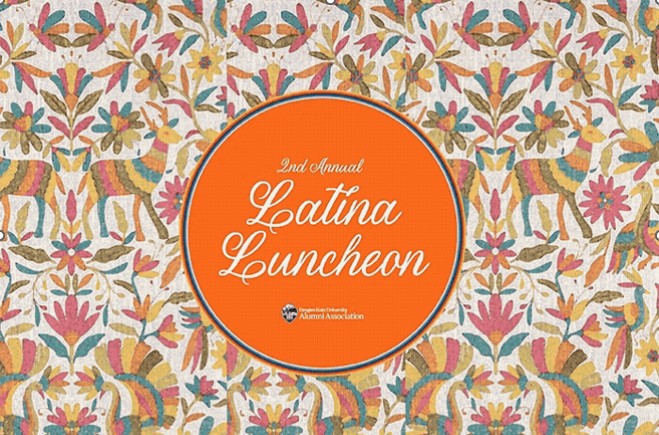
The OSU Foundation and Alumni Association hosted the 2nd Annual OSU Latina Luncheon to honor the resilience and fortitude of the Latine/Hispanic community while offering a stage for distinguished Oregon State and community Latina leaders to share their remarkable journeys of overcoming challenges and achieving success.

Of the two hour event with over 100 visitors, there was about 45 minutes of mingle time before the formal program began. We had the opportunity to talk with about 15 event attendees to share information about the Oregon Multicultural Archives, specifically, our Latino/Latina community archival materials.
The space was decorated beautifully and the event concluded with a couple lively rounds of Lotería.
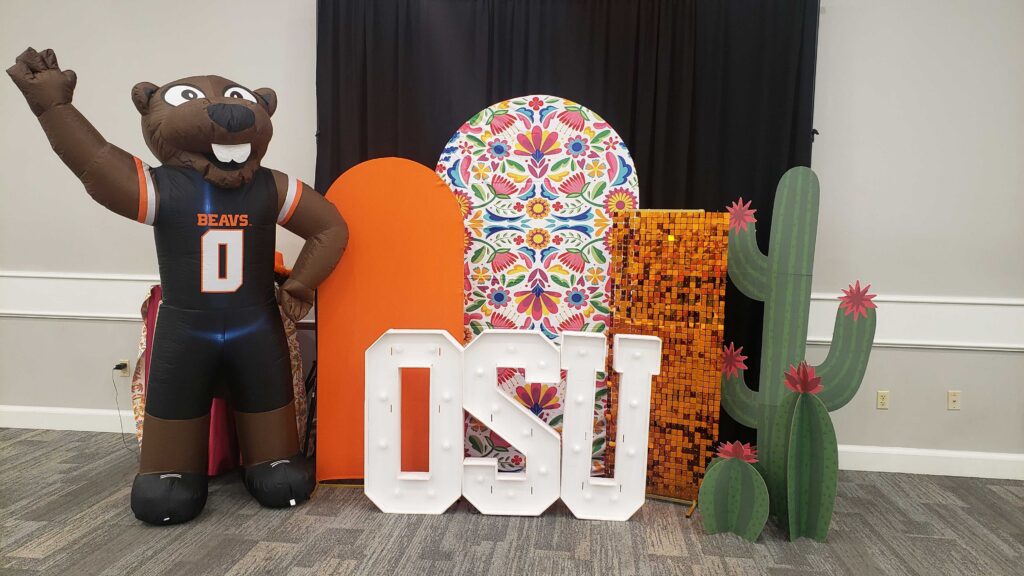
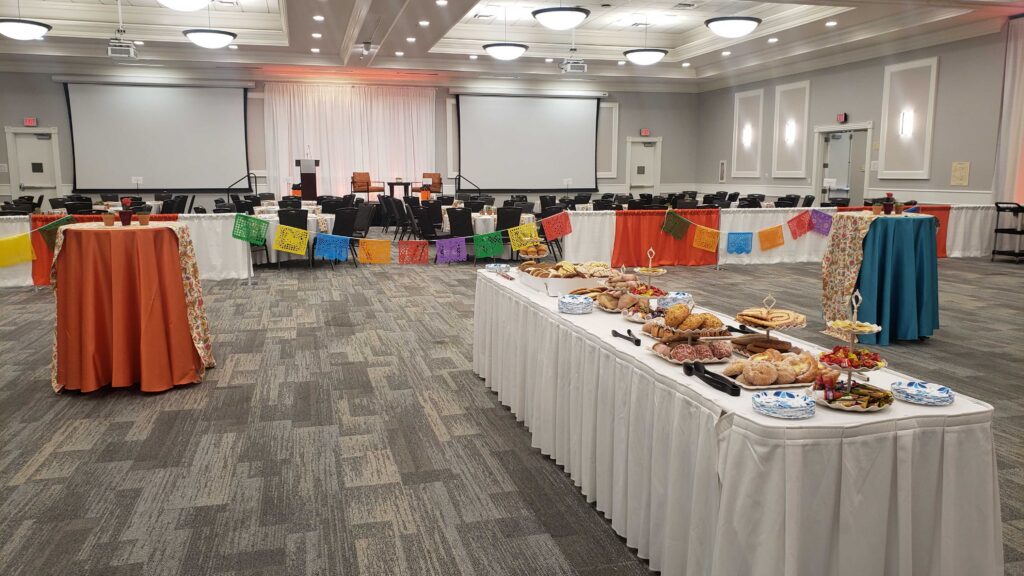
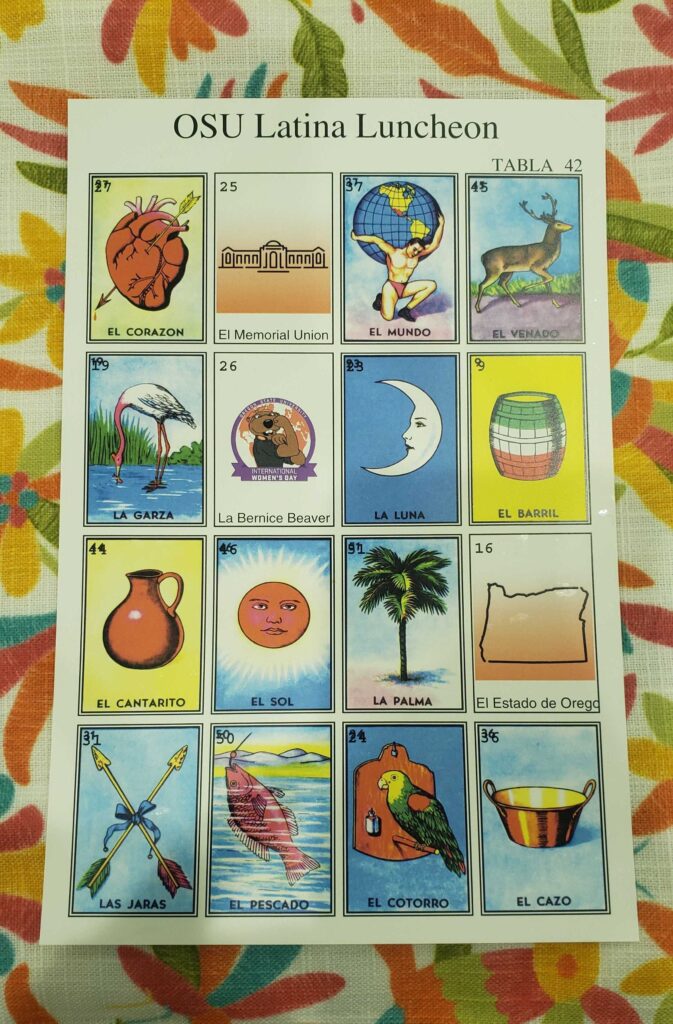
~~~~~~~~~~~~~~~~~~~~~~~~~~~~~

